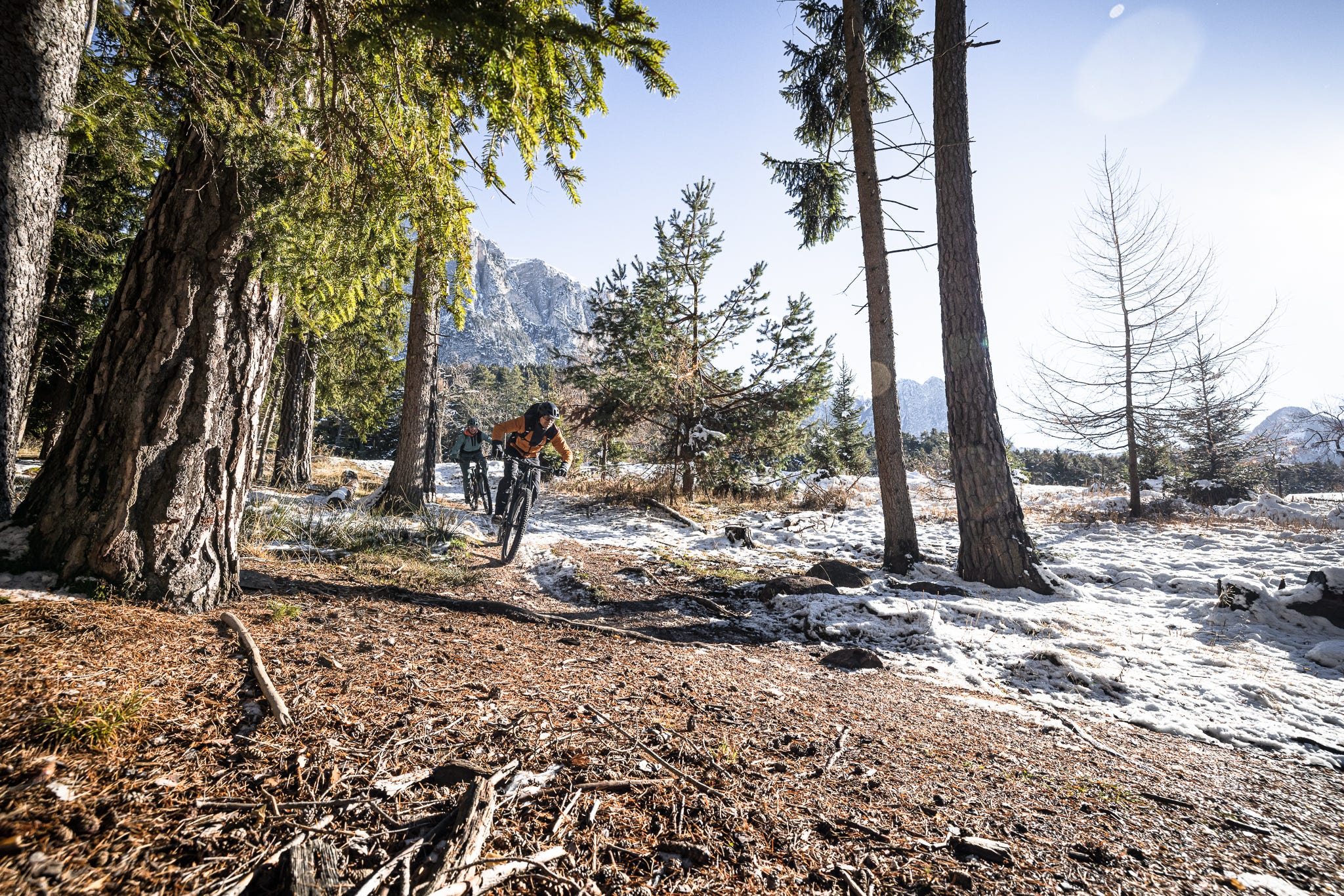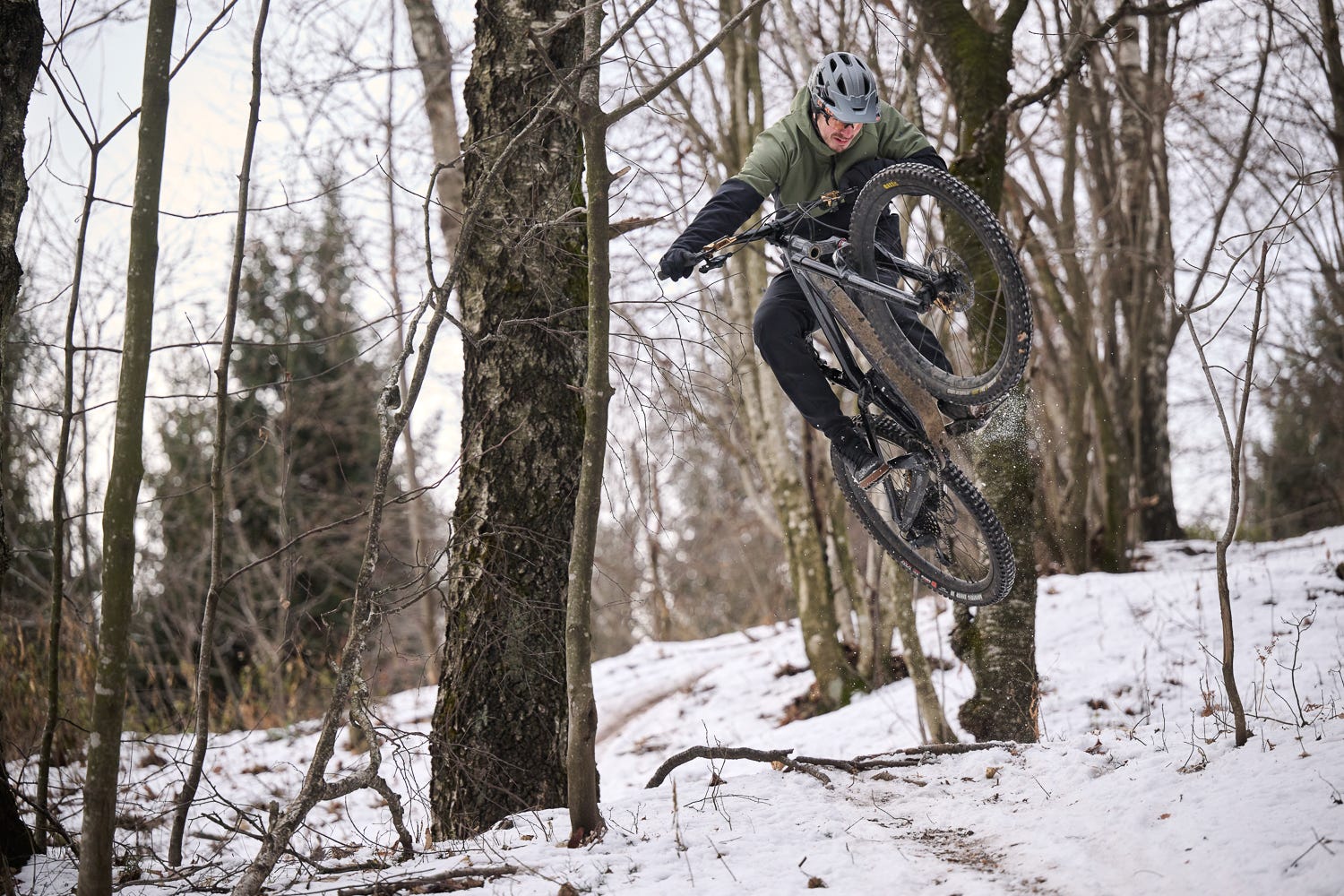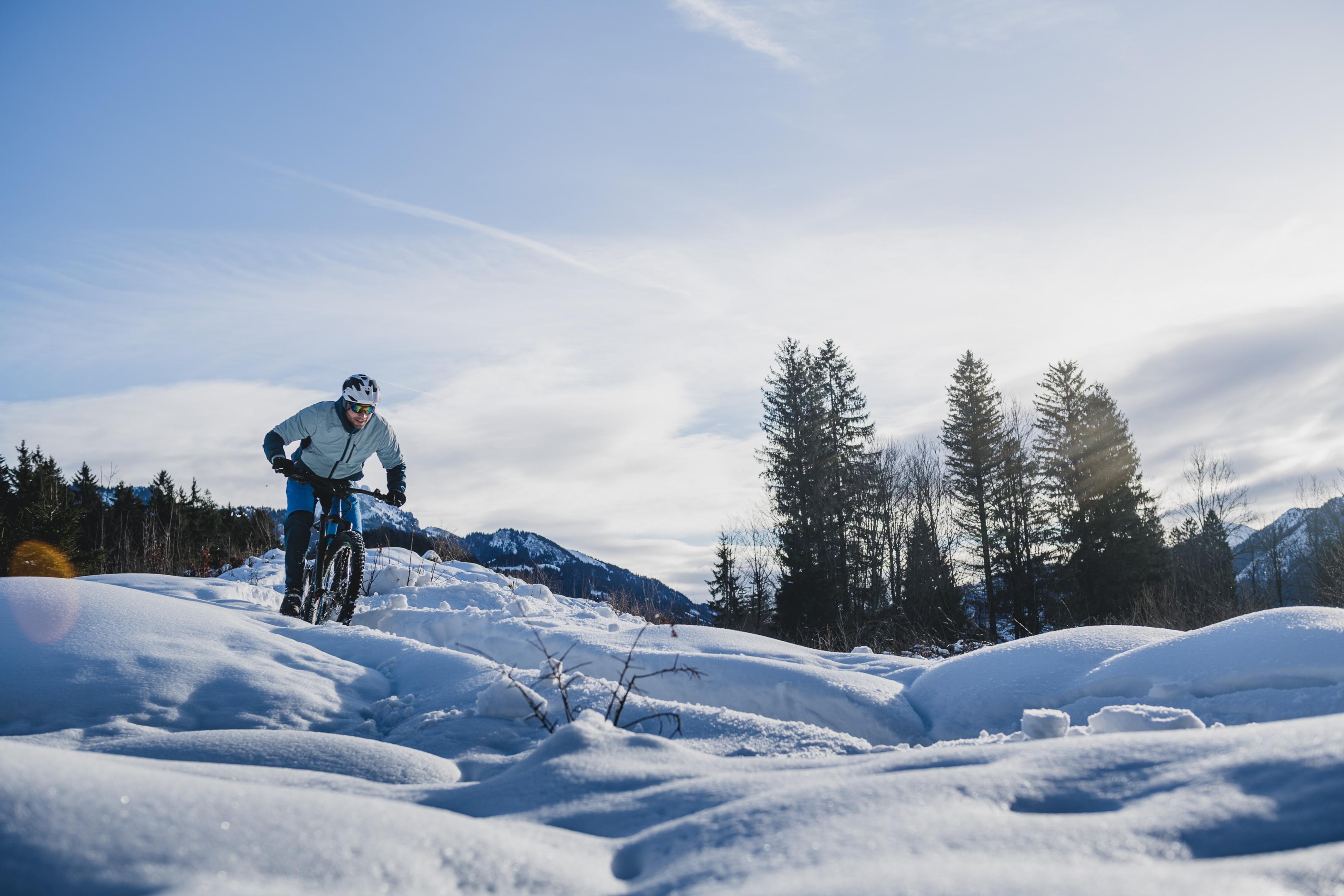MTB riding in winter: What VAUDE athlete Andi Wittmann advises
You need to research how to winterize your mountain bike on other sites. Because mountain biking is simply too much fun in winter to let it go. Andi Wittmann, VAUDE athlete, agrees.
"It stands and falls with the right equipment," he says in the VAUDE podcast "Inside Outdoor" in conversation with Ben. You can find out his tips on this and what Andi's dream conditions for a winter MTB tour look like in the podcast and in this blog post.
What is the best cycling clothing in winter?
When it comes to mountain biking in winter, terms such as "waterproof", "insulation" or "waterproofing" quickly come up. We have already explained in another blog post, what these terms actually mean and what is important when it comes to clothing, when riding your MTB in winter.
Andi Wittmann presents his winter clothing concept on his YouTube channel:
Andi Wittmann shows a VAUDE winter MTB highlight in this video:
Safe through snow and ice with the right MTB technique and bike gear
"Snow is treacherous: as soon as you go too fast, it's gone," warns Andi Wittmann. According to him, it is therefore important to always ride with foresight and control your speed. The brakes also need time to get up to temperature and deliver their full performance.
When it comes to bike equipment, the main focus should be on the tires: they are the only contact surface between the MTB and the ground and must also transmit steering, braking and drive forces.
If it is slippery, it helps to lower the tire pressure slightly. This gives the tires more contact surface and adaptability to the ground. Caution: Most bicycle tires have an indication on the sidewall with the minimum pressure that you should not go below.


Are studded tires useful for mountain biking in winter?
Of course, special winter and all-season tires for bikes, where the tread and rubber compound are completely adapted, work even better: These tires have grippy siped treads and a softer rubber compound. As a result, the tires interlock perfectly with the ground.
Such tires perform well in autumn rain slush as well as in snow and roll only slightly worse than summer tires. If you frequently drive on ice or hard-packed snow, you can opt for so-called studded tires. Small screws in the tire tread improve grip. However, Andi Wittmann advises against studded tires: "In my opinion, you ruin a lot. And they only help on ice - they don't grip in the wet.


After the tour is before the tour
Andi Wittmann has one more recommendation: "Make sure you use flat pedals. Cleats clog up quickly and in winter you slip quickly, so it's better if you can put your foot down on the ground quickly."
The principle "After the tour is before the tour" applies particularly to winter mountain biking: "Salt is death," says Andi Wittmann. So think about how you can get the salt off beforehand, especially from the chain, derailleur cassette, rear derailleur and derailleur blade. And put your bike indoors. "Otherwise everything gets tough in the cold," explains Andi Wittmann, referring to brakes, bearings and suspension elements, for example.
The best conditions for mountain biking in winter
"Ice and ten centimetres of snow on top are dream conditions. You can go powdering on your bike," says Andi Wittmann. Another plus point: "When the ground is frozen, you damage it the least." Just like in summer, it damages the trails if they are muddy and you ride your MTB on them. This promotes erosion.


Especially during the short winter days, an after-work tour or the ride home from work can quickly turn into a "night ride". Night rides are colloquially known as MTB rides in the dark.
What the DIMB says about night rides
Conservationists criticize the fact that they interrupt the animals' resting periods. The German Mountain Bike Initiative (DIMB) has therefore stipulated in its "trail rules": "Leave the forest in good time at dusk so as not to disturb the animals as they feed." In winter, disturbances are life-threatening for hibernating animals. Waking up and fleeing costs them a lot of energy. Energy that they lack for the rest of the winter.
In the podcast, Ben and Andi also talk about night rides. "It's no fun," says Andi. "No matter how good the light is, you can't see properly". He prefers to go on tour at the weekend or finish work early.
Pump tracks are another option for biking in winter: They are open until the dark evening hours and are even occasionally illuminated. And you can learn and perfect basics such as cornering and the correct shifting of the body's center of gravity there.

